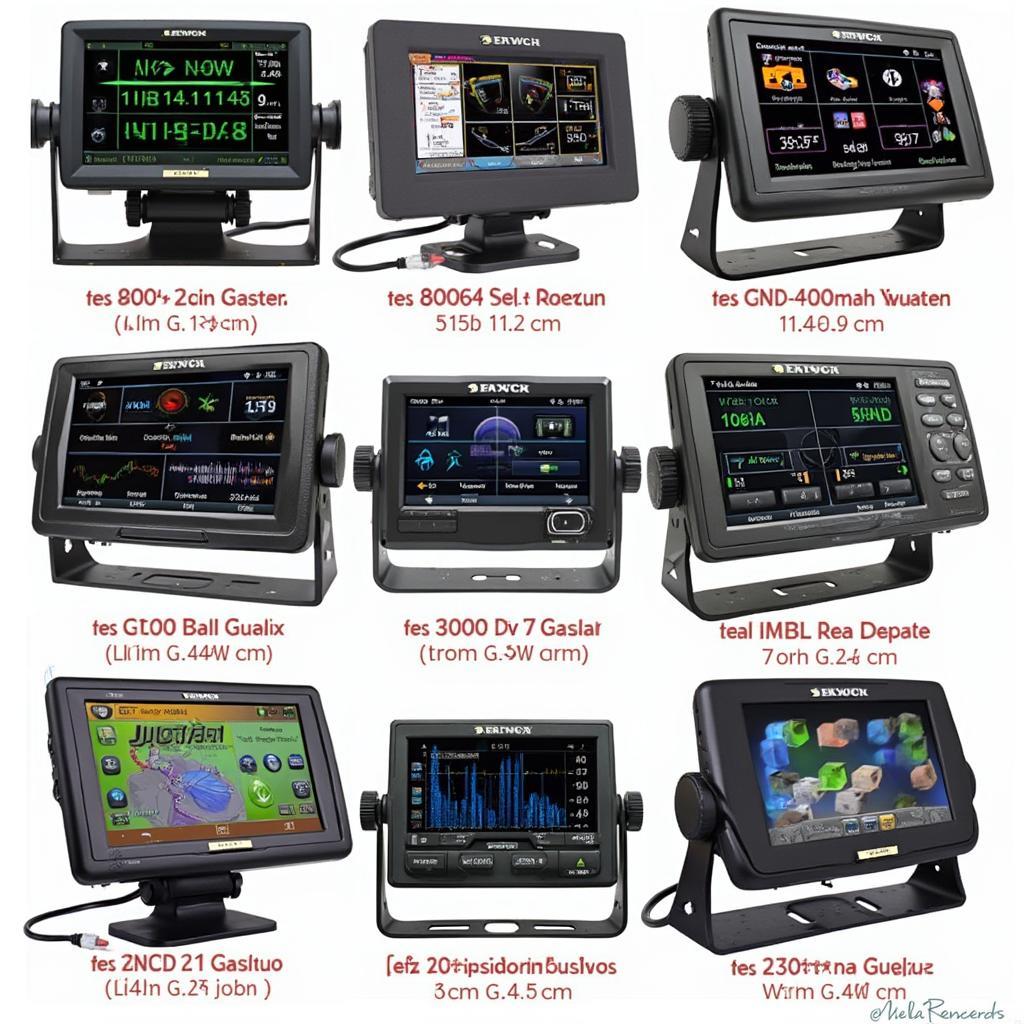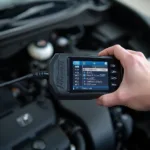OBD2 multi function displays have revolutionized how we interact with our vehicles, providing a wealth of real-time information right at our fingertips. But with so many options available, choosing the right one for your needs can feel overwhelming. This guide will delve into everything you need to know about OBD2 multi function displays, from their functionality to their benefits and how to choose the perfect one for your car.
What is an OBD2 Multi Function Display?
An OBD2 multi function display, often referred to as a car code reader with live data, is a device that connects to your vehicle’s OBD2 port. This port, typically located under the dashboard on the driver’s side, acts as your car’s data center, constantly monitoring various systems and storing diagnostic trouble codes (DTCs).
Unlike basic code readers that only show error codes, an OBD2 multi function display retrieves this data in real-time and presents it in an easy-to-understand format. This can include anything from engine RPM and coolant temperature to fuel economy, battery voltage, and even turbo boost pressure (depending on your vehicle’s make and model).
Why You Need an OBD2 Multi Function Display
Investing in an OBD2 multi function display offers numerous benefits for car owners:
-
Real-time Monitoring: Keep a constant eye on vital engine parameters, allowing you to spot potential issues before they escalate into costly repairs. For instance, monitoring your coolant temperature can prevent overheating, while tracking your fuel economy helps optimize your driving habits.
-
Enhanced Diagnostics: Go beyond simply reading error codes. OBD2 multi function displays present live data streams, helping you pinpoint the root cause of a problem. This proves invaluable when troubleshooting complex issues or communicating effectively with your mechanic.
-
Performance Tracking: For driving enthusiasts, these displays can act as a performance gauge, offering insights into metrics like turbo boost pressure, air/fuel ratio, and intake air temperature. Some advanced models even allow you to record and analyze data logs, helping refine your driving techniques on the track or improve fuel efficiency on the road.
-
Increased Control: OBD2 multi function displays empower you with greater control over your vehicle. Imagine being able to monitor tire pressure, adjust shift points, or even customize gauge layouts directly from the display—all without needing specialized tools or visiting a mechanic.
Choosing the Right OBD2 Multi Function Display: Key Features to Consider
The market offers a wide range of OBD2 multi function displays, each with unique features and capabilities. Here are some crucial factors to consider:
1. Display Type and Size:
-
Monochrome or Color: Monochrome displays are budget-friendly and offer excellent readability in direct sunlight. Color displays, while generally more expensive, provide a visually appealing interface with customizable themes.
-
Screen Size: Larger screens offer better visibility, especially for drivers with less-than-perfect eyesight. Consider the display’s physical dimensions and ensure it integrates seamlessly with your dashboard without obstructing your view.
2. Functionality and Features:
-
Vehicle Compatibility: Ensure the display you choose is compatible with your car’s make, model, and year. Most displays support a wide range of vehicles, but it’s crucial to verify compatibility before purchasing.
-
Data Parameters: Different displays offer varying levels of data monitoring. Consider your needs and prioritize displays that track the parameters most relevant to you, whether it’s basic engine data or more specialized metrics like turbo boost pressure or transmission temperatures.
-
Additional Features: Some displays offer extra functionalities such as GPS navigation, smartphone connectivity via Bluetooth, multimedia playback, and even built-in dashcams. Determine which features are essential to you and factor them into your decision.
3. Ease of Use:
-
User Interface: Look for displays with an intuitive and user-friendly interface. The menu navigation should be straightforward, and the data presented should be clear and easy to understand.
-
Installation Process: The installation process should be simple and hassle-free. Most displays connect directly to the OBD2 port, requiring no complicated wiring or modifications to your vehicle.
-
Data Logging and Analysis: If you’re interested in recording and analyzing driving data, opt for a display with data logging capabilities and accompanying software. This allows you to review historical performance data, track trends, and make informed decisions about your driving style or vehicle maintenance.
 Variety of OBD2 Multi Function Displays
Variety of OBD2 Multi Function Displays
Conclusion: Empower Yourself with Knowledge and Control
OBD2 multi function displays have become an indispensable tool for car owners who demand more than just basic information. By providing real-time insights into your vehicle’s inner workings, these displays empower you with the knowledge to make informed decisions about maintenance, performance, and even your driving habits.
Choosing the right display depends on your individual needs and budget. However, regardless of your choice, investing in an OBD2 multi function display is a step towards a more connected and informed driving experience.

